On the patio of a gay dive bar in the California desert, surrounded by palm trees, neon lights and cheap cocktails, Ron Oliver has penned the world’s syrupiest and snowiest Christmas films. For the last 13 years, he has been writing and directing romcoms for the Hallmark Channel, an American cable network which released 40 original Christmas movies in 2020 alone. Oliver has scripted nine, including Operation Christmas, Hope At Christmas and My Christmas Dream, not to mention Romance At Reindeer Lodge. Is it challenging, after writing so many, to come up with new Christmas-based conflicts for couples to overcome? “Sweetie, darling,” Oliver says, “you have no idea.”
Every year has nine seasons, according to the Hallmark Channel. Its annual schedule begins with New Year’s movies, before venturing into spring, Valentine’s, the countdown to summer and summer itself. There’s an entire block dedicated to June weddings, then (naturally) there’s Christmas in July, followed by autumn movies before the countdown to Christmas begins in October. Two sister channels, Hallmark Movies & Mysteries and Hallmark Drama, bulk up the portfolio — the whole lot can be watched in the UK via Amazon Prime Video.
Yet while the seasons change, the stories stay the same. Hallmark movies regularly feature a career woman moving back to her hometown; royals dating commoners; a small business that needs saving; two people who hate each other slowly falling in love. These packages regularly have pun titles (You’re Bacon Me Crazy, the story of two rival food-truck owners who fall in love) or ones that are so straightforward you assume you’re missing something (Easter Under Wraps, about an undercover chocolate-factory owner who falls in love with her head chocolatier).

How exactly did a greetings-card company come to produce over 100 movies every year? Watch even a small sample and you’ll notice the same actors, the same extras, even the same sets. Behind the scenes lies a self-contained sub-industry of the filmmaking world, where a recurring cast and crew describe each other as “family”. But how do this family make so many films? Who are they making them for? And why, exactly, do the female leads always seem to be bakers?
Screenwriter William Penick likens writing for Hallmark to being a composer under Stalinist rule. “Who was that Russian composer under Stalin? Tchaikovsky?” he begins.“Not that I’m comparing myself to Tchaikovsky, not even close. But what I’m saying is: under Stalin you had such incredible constraints of what you could write and what was expected. In a strange way, it’s a little similar.”
Penick began his Hallmark career in 2012 with It’s Christmas, Carol! — his most recent is 2020’s A Little Christmas Charm. Hallmark writers have three weeks for first drafts, and every movie has nine acts and eight commercial breaks. Act One needs to feature a meet-cute and characters speaking their goals aloud (“It’s brutal. You feel like a hack,” confesses one actor). Act Four features the “all is lost” moment, though writers must keep conflict mellow (forget about politics, sex or getting drunk.)
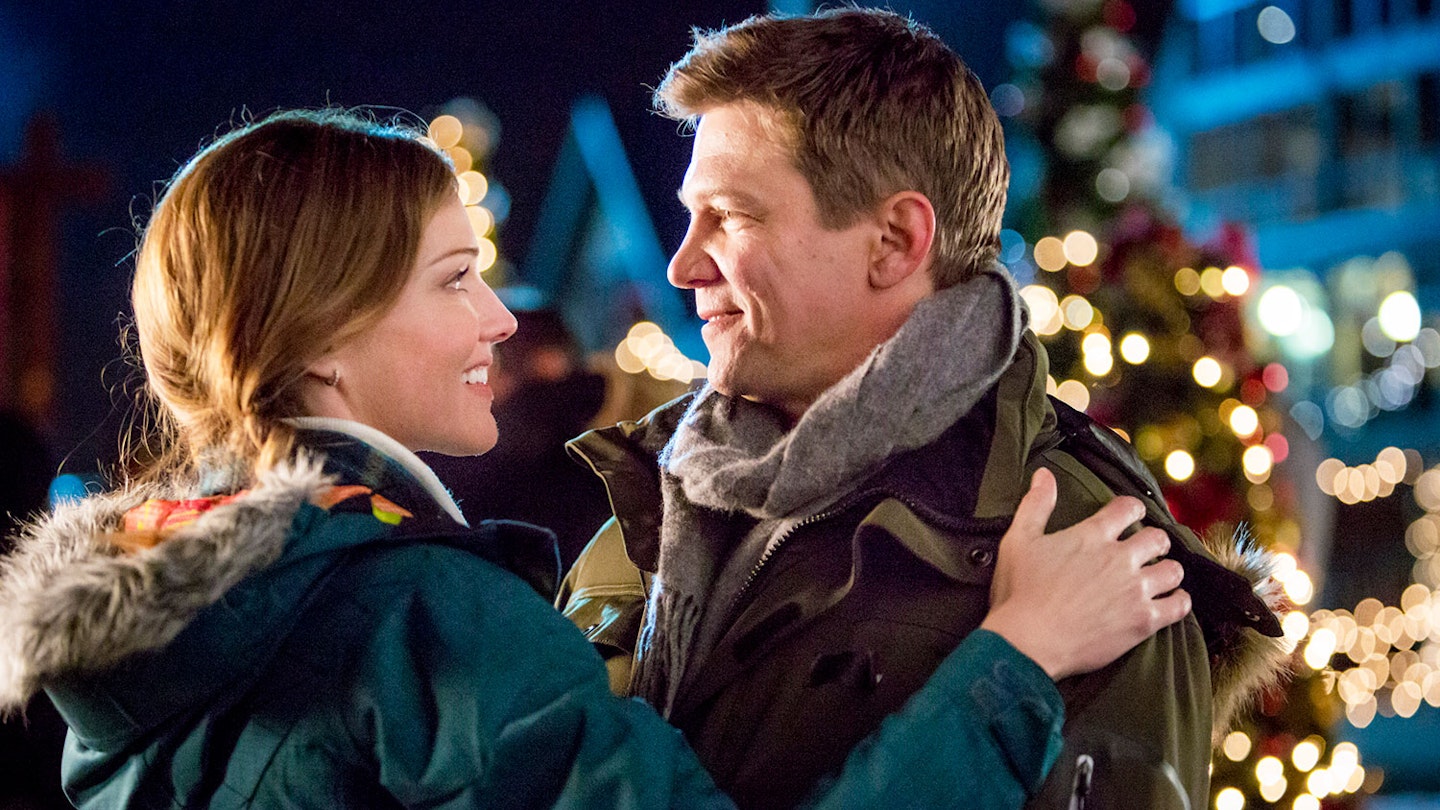
The Hallmark Channel is owned by Crown Media Holdings and is 20 years old, though it launched its countdown to Christmas in 2009. That year, the channel released just four new Christmas films — this year, there’ll be 41. It is rumoured that Hallmark movies cost just $2 million to produce; meanwhile, the company made $600 million in ad revenue in 2018. Last year, over 35 million people tuned into the countdown to Christmas between 23 October and 17 November (huge swathes of these were women aged 25 to 54).
Hallmark doesn’t want to mess with success, hence the strict rules for writers. Films should be funny but not too funny, or as Penick was told, “It’s capital ROM, lowercase com.” There should only be one kiss, and the two leads should go on a journey of self-discovery and help each other achieve their goals. You can write as if budget is no issue — in the rewrite, you’ll find out that it is.
“A Little Christmas Charm takes place in New York City, and the original script had a scene at the shops at Columbus Circle,” says Christine Conradt, who has been rewriting Hallmark movies since 2017. Like many Hallmark offerings, Charm was filmed in Canada — where the small towns are sweet and the tax breaks earned from hiring locals are sweeter. With no money to film in the actual Big Apple, Conradt rewrote the scene, setting it in a generic Christmas market.
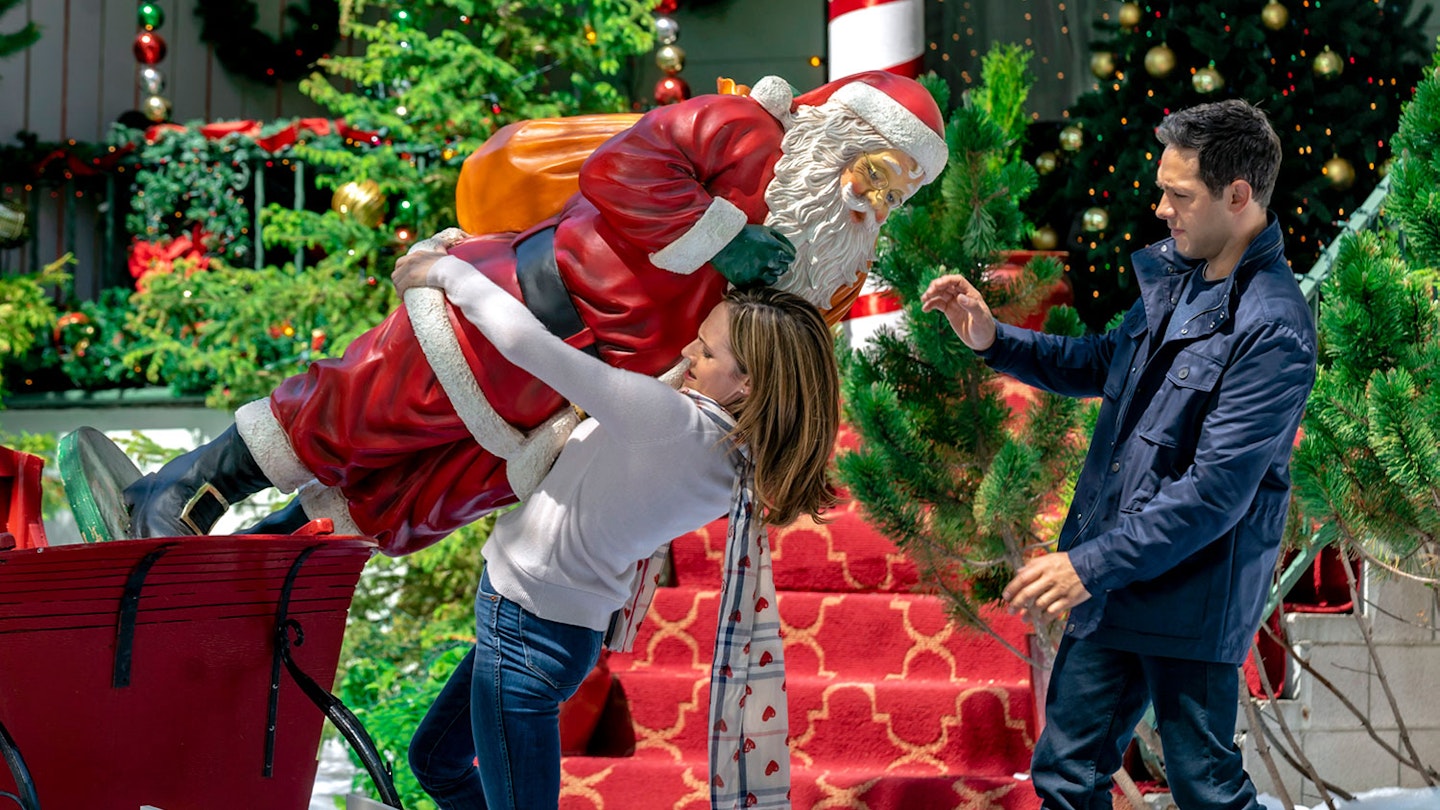
An unexpected number of Hallmark writers have a history with horror: Oliver has worked on a couple of Prom Night sequels, while Conradt penned A Housekeeper’s Revenge and The Psycho She Met Online. Oliver explains that “visuals are heightened” in both genres — this is also why Hallmark movies regularly feature bakers. “It’s not radio,” Oliver says. “You want people to do something that you can see.” Yet coming up with fresh visuals can be tricky.
Last year, Conradt wrote As Luck Would Have It, a film about a matchmaking festival in Ireland. In the original draft, her lead Lindsey drove down rural roads before stopping: an abundance of sheep were blocking her way. Condradt got a call from Hallmark’s execs — the scene had to go. There was already a sheep-in-the-road scene in another of that year’s films.
Writers can swap out sheep to keep things fresh, but what about actors who work with Hallmark year after year? How do you look into your leading lady’s eyes and pretend you’re falling in love for the first time, instead of the ninth?
When Brennan Elliott stars opposite Lacey Chabert, it’s “like putting on a jacket I’ve worn forever”. The two actors have starred in nine Hallmark films together (you may know Chabert better as Gretchen Wieners from Mean Girls) while Elliott has starred in 18 overall.

“It’s just truly an effortless, easy, wonderful experience, because we’re friends and we trust each other,” Elliott says. Hallmark has a number of recurring stars, from Andrew Walker (19 films) to Candace Cameron Bure (28!). The Wonder Years star Danica McKellar has done so many that she was gently mocked in Rian Johnson’s Knives Out, in which Johnson coupled her name with fictional Hallmark film Deadly By Surprise.
Leading man Paul Campbell, whose first Hallmark film, Window Wonderland, aired in 2013, doesn’t stress about bringing something new to his roles. “You’re not really trying to reinvent the wheel,” he says. “What we’re trying to do is deliver that same feeling, that same story that people respond to.” Campbell even has a signature lovable-goof move that he sneaks into every film: “A 360-degree spin with a dumb smile on my face.”
Even in Hallmark’s most wintery movies, you’ll never see misty clouds of breath coming out of the actors’ mouths. The vast majority are shot in summer.
In truth, the biggest challenge is that movies are shot in just 15 days (‘Hall Of Fame’ films get ten extra). “You could get a script on Monday and be on a plane Wednesday,” Elliott says, explaining there’s little rehearsal time. Once on set, “You might get two takes if you’re lucky.”
Hallmark actors have to master an entirely new way of acting. Nikki DeLoach (11 films) explains it like this: “Instead of being angry or full of rage, you have to lighten it and be frustrated.” Elliott has similarly had to rein in his passion, “When I started I was like, ‘I’m supposed to be in love with this woman, I want to hold her and kiss her’… But we can’t look like we’re ravaging each other on some late-night show.”
Some have learned the hard way what happens when things get too realistic. Retired director James Head recalls working on Campfire Kiss, a story about single parents and their kids. Head enjoyed how realistic the teen dialogue was, but got a call from execs saying the actors needed to soften it. “That would come out as bad acting, you can’t do that to the actors,” Head says. He proceeded as normal, and when the film aired, internet commenters complained about the “weak, whiny and pouty” kids. “There’s a real disjoint here between reality and what you want,” Head says.
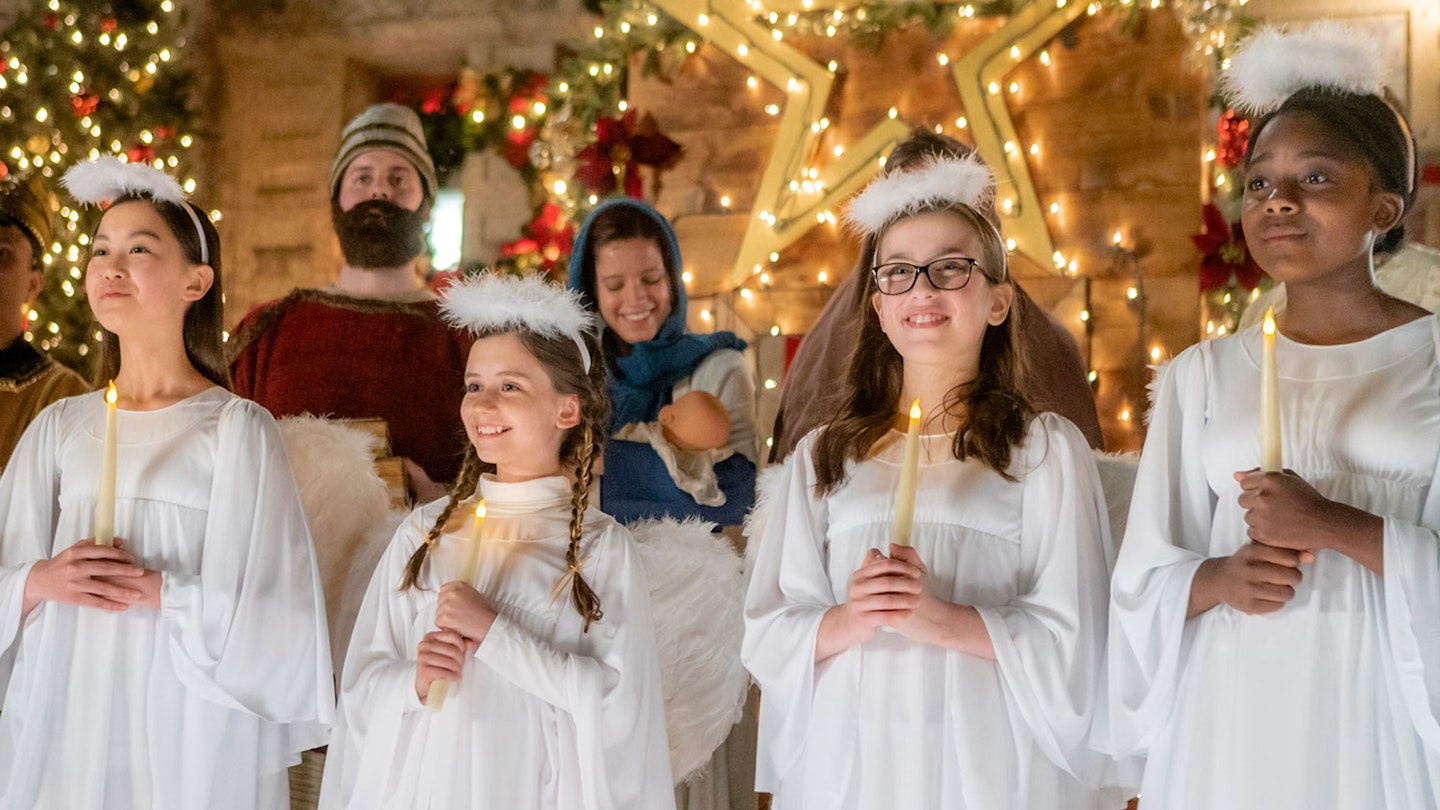
It’s easy to see why Hallmark wants to recast actors who have mastered its tone, but why do the actors themselves keep coming back? “There’s not a lot of networks that you can work for that know you as a person,” DeLoach says, explaining that Hallmark “stepped in to really help out” when one of her children was sick. Campbell enjoys “shooting content that doesn’t emotionally drain you at the end of the day”, and also likens the cast to family, noting actor Malcolm Stewart has now played his father three or four times. (Some actors, however, you don’t get to work with again — Head notes that actor Meghan Markle, who he directed in 2016’s Dater’s Handbook, “currently has a different title”.)
Oliver likes to recast actors, to the extent that he has hired extra Nelson Wong to play a character called Kenny in over ten movies. On set, Wong likes to imagine Kenny is a detective going undercover at different jobs (fans have taken notice, coining the term ‘Kennyverse’). “We have a lot of fun between takes,” Wong says.
And sometimes, those on set with you are your literal family. In 2019, DeLoach was filming a carnival scene near her hometown. “We didn’t have the budget to fill it up with people,” she says — she hopped on the phone to her sister; within the hour, family and friends arrived on a school bus. “There was my friend Hannah that I cheered with… my sister was there, and my nieces,” DeLoach says. “It was just magical.”
For the last three years, long-time fan Jane has reviewed Hallmark movies on her personal blog, Hallmark For All Seasons. She has created bingo cards for the most common tropes: baking montages, ice-skating, sentimentally charged ornaments. “One of my favourites is when people drink their hot cocoa with two hands,” she says. “It’s such a weird thing to notice, but I love it.” Nobody can explain exactly why this is —though director Head notes, “We’re constantly looking for ways to make [the actors] seem colder.” Even in Hallmark’s most wintery movies, you’ll never see misty clouds of breath coming out of the actors’ mouths. The vast majority are shot in summer.

“The best acting I’ve ever done in my life is pretending that it’s cold on a 95-degree day,” says DeLoach. This summer, Campbell filmed in a barn while it was 40°C outside, and there had been a delay transporting the air-conditioning unit from the previous set. With no time to waste, the actors carried on in scarves, hats and gloves while the crew tanned in T-shirts and shorts. “People were literally on the verge of passing out,” Campbell says, “Some people had ice packs down their backs.”
This mixed-up seasonal schedule means director Head once spent Christmas Day rewriting a spring-themed movie after it began to snow on set. Earlier in his career, he had to rework a scene in a Christmas film because he couldn’t procure enough snow (shavings bought from nearby ice rinks) to fill two entire streets. While you’re more likely to see CG snow these days, Head recalls using potato flakes when starting out: “That was awful… they stick like glue.”
“We had people coming up to us literally crying, telling us that these movies meant so much to them"
Production designer Ginna Scotto lists other challenges. She’s put a fresh spin on the same bakery set multiple times, and when decorating for Christmas, she has to ignore reality. “A normal person wouldn’t go out of their way to change all of their towels and their bedspread to Christmas,” she says, “but in Hallmark land you do.” Wherever the audience looks, they have to see Christmas, even if that means putting fairy lights in the bathroom. “Just have as many wreaths as possible, I can’t stress that enough,” Scotto says.
Then there are the no-nos: no taxidermy animal heads or signs of religion on the walls (both are too divisive). During party scenes, only some actors should hold beer — others must have water or tea. Things regularly need to be signed off by executives: director Head has been told to avoid dressing his leading men in plaid (too Canadian), and has sent pictures of actors’ hair to execs. “They’d ask you to bring the lead’s hair down in the foreground because his hairline was starting to recede,” Head says, “It’s like, what do you do with hair that’s a half-inch long?”
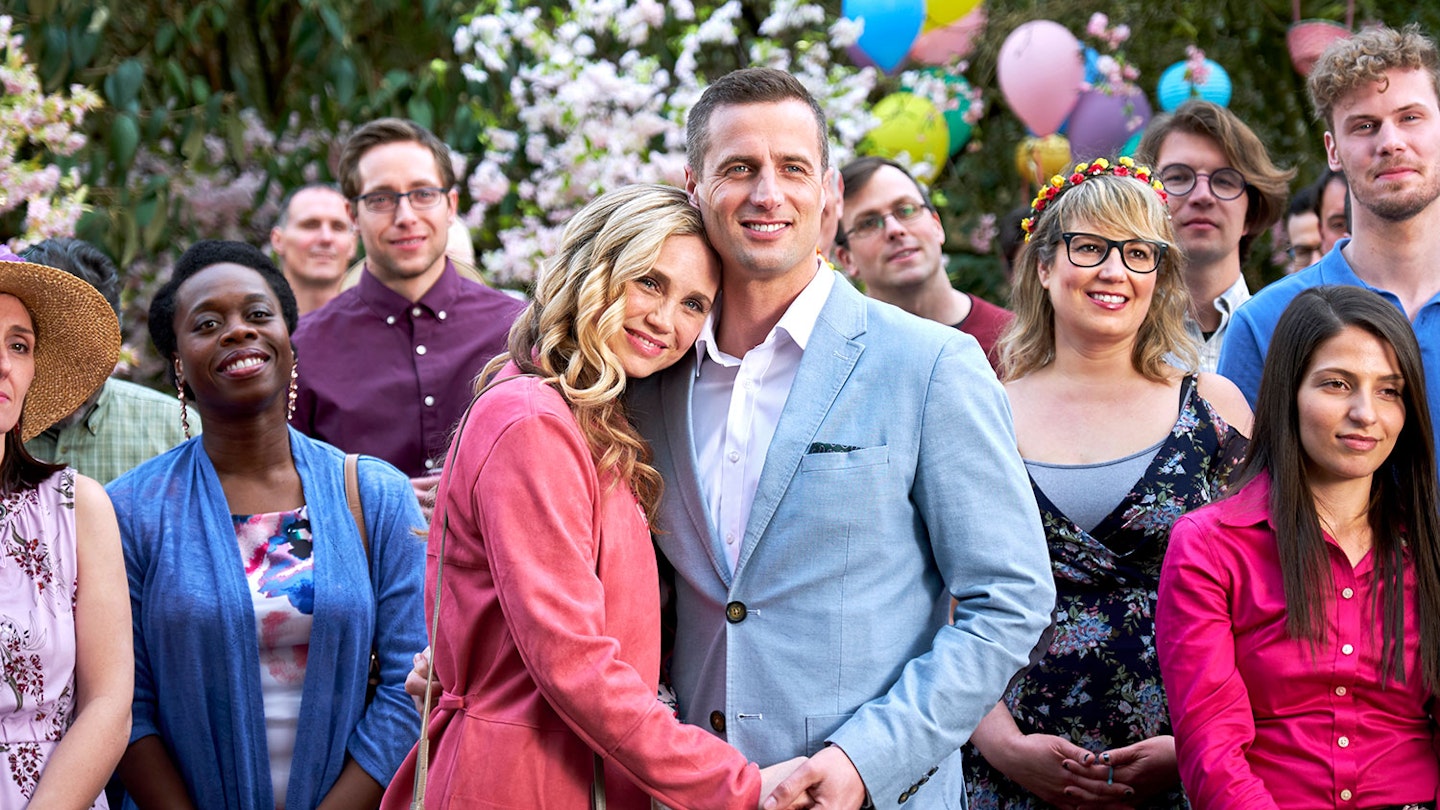
Gentle arguments, gentler kisses, fake snow, loveable teenagers: who exactly is all of this for?
In 2019, Christina Figliolia and three friends threw the world’s first Christmas Con. Sponsored by Hallmark, the three-day event attracted 9,000 attendees who queued for hours to meet the channel’s current and former stars, such as Lacey Chabert, Alicia Witt, Chad Michael Murray and Melissa Joan Hart. By the end of the weekend, there’d been two proposals — one under a Christmas tree, one outside a booth airing Hallmark films.
“We had people coming up to us literally crying, telling us that these movies meant so much to them,” Figliolia, from New Jersey, says. Attendees were mostly women aged between 40 and 70. While Hallmark movies are ostensibly apolitical, they repeatedly reinforce conservative heteronormative ideals (though the channel’s first LGBTQ+ couple debuted in 2020, and it has begun casting more Black leads after experiencing a backlash).
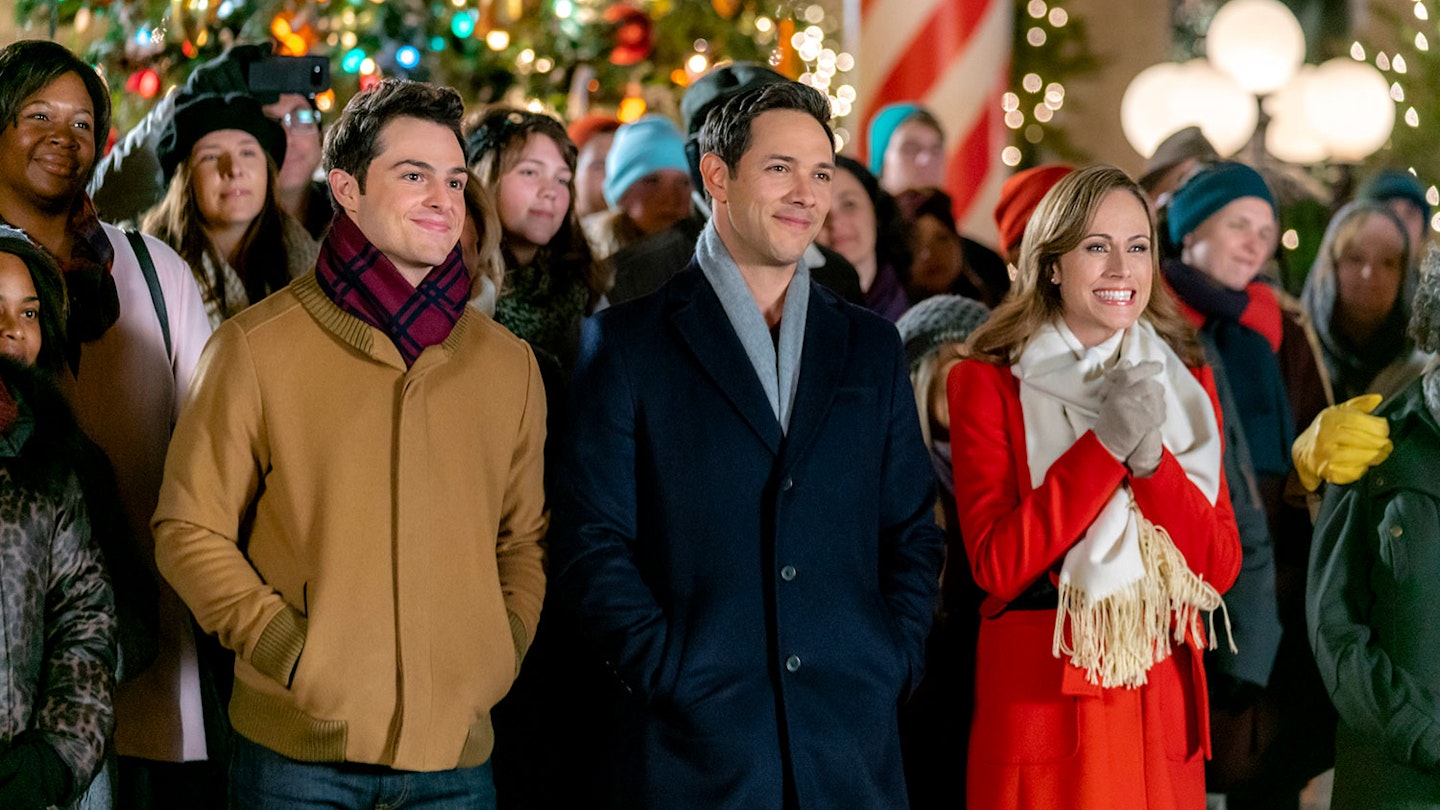
Everything that goes on behind the scenes of a Hallmark movie is designed to appeal to these older conservative women. Yet men enjoy these movies too. Leading lady DeLoach says she met a fan named Robert at Christmas Con who she will “never, ever, ever, ever” forget. “He looked like a lumberjack. He was tall, built, he had flannel on and jeans and boots,” says DeLoach. "And he just cried and wrapped his arms around me.” Robert explained he had just lost his father, thanking DeLoach for her portrayal of grief in 2019’s Two Turtle Doves. Nearly everyone interviewed in this article used the words “hope” and “escape” to describe Hallmark films.
“I think it gives people hope that there’s going to be a happy ending and hope this Christmas will be the one that makes everything right,” says writer and director Oliver, who married his husband on Christmas Day. His favourite Hallmark memory is of his first day filming Christmas At The Plaza, greeting the last day of summer in a pink seersucker suit. A huge crowd gathered to watch the opening shot: the leading lady walked past a fountain, said, “Good morning,” and went inside the hotel. “I yelled, ‘Cut!’ and literally 300 people burst into applause,” Oliver says. “You could see on people’s faces… they just loved it.”
The scene wasn’t remotely groundbreaking. And that didn’t matter at all.
